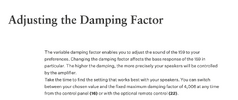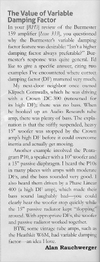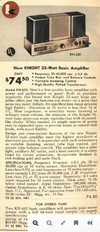There was a recent letter in The Absolute Sound about damping factor(s) that piqued my interest.
The letter said that high-damping factor amps might not produce bass with certain speakers.
This pretty much described a situation a friend went through in the early 80s. He updated his amp from a mid-power Sansui, to what I remember as a Phase Linear 400, and he lost all the bass from his speakers. I can remember switching phase on his speaker wires repeatedly and not hearing any difference in the bass. Thinking the amp was at fault he took it back to Tech HiFi and it had plenty of bass in the store with the speakers that they connected it to. I believe he returned the Phase Linear and stayed with the Sansui amp.
Is this common knowledge and something I have never run across before?
BTW, the letter referenced the Burnmiester 159 amp which has a user-adjustable damping factor.



The letter said that high-damping factor amps might not produce bass with certain speakers.
This pretty much described a situation a friend went through in the early 80s. He updated his amp from a mid-power Sansui, to what I remember as a Phase Linear 400, and he lost all the bass from his speakers. I can remember switching phase on his speaker wires repeatedly and not hearing any difference in the bass. Thinking the amp was at fault he took it back to Tech HiFi and it had plenty of bass in the store with the speakers that they connected it to. I believe he returned the Phase Linear and stayed with the Sansui amp.
Is this common knowledge and something I have never run across before?
BTW, the letter referenced the Burnmiester 159 amp which has a user-adjustable damping factor.










